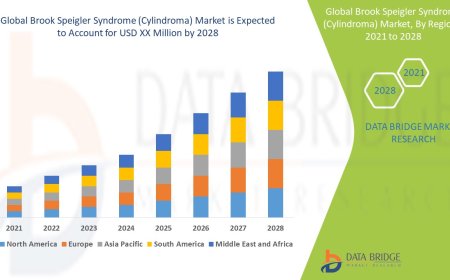What’s the difference between annual accounts and management accounts?
For UK taxpayers and business owners, navigating the financial landscape of running a company can feel like wading through a sea of jargon. Two terms that often cause confusion are annual accounts (also known as statutory accounts) and management accounts.

Understanding Annual Accounts and Management Accounts Definitions and Key Differences
For UK taxpayers and business owners, navigating the financial landscape of running a company can feel like wading through a sea of jargon. Two terms that often cause confusion are annual accounts (also known as statutory accounts) and management accounts. These financial reports serve distinct purposes, yet both are critical for maintaining a businesss financial health and compliance. This article, tailored specifically for UK audiences in 2025, explores the differences between annual accounts and management accounts, offering clear explanations, up-to-date statistics, and real-world examples to help you make informed decisions. Lets dive into the definitions, legal requirements, and core distinctions to set the foundation for understanding these essential financial tools.
What Are Annual Accounts?
Annual accounts in the UK , often referred to as statutory accounts, are mandatory financial reports that UK limited companies must prepare and file with Companies House and HMRC at the end of their financial year. These reports provide a comprehensive snapshot of a companys financial performance and position over a 12-month period (or longer for the first accounting period). According to Companies House, as of April 2025, approximately 4.7 million private limited companies in the UK are required to submit annual accounts, reflecting the scale of this obligation. These accounts are designed to meet statutory requirements under the Companies Act 2006 and are primarily intended for external stakeholders, such as shareholders, creditors, and HMRC.
The core components of annual accounts typically include:
-
Balance Sheet: A snapshot of the companys assets (e.g., property, cash), liabilities (e.g., loans, debts), and shareholders equity as of the last day of the financial year.
-
Profit and Loss Account: A summary of the companys revenue, expenses, and resulting profit or loss over the financial year.
-
Directors Report: An overview of the companys activities, performance, and future prospects, mandatory for most companies (though small companies may be exempt from certain elements).
-
Notes to the Accounts: Additional details explaining financial statement figures, such as loan terms or depreciation schedules.
-
Auditors Report: Required for medium and large companies, unless exempt, to verify the accuracy of the financial statements.
For small companies (those meeting at least two of the following: turnover ? 15 million, balance sheet total ? 7.5 million, or ? 50 employees as of April 2025), simplified abridged accounts can be filed, reducing the level of disclosure. Micro-entities (turnover ? 632,000, balance sheet total ? 316,000, or ? 10 employees) can file even simpler accounts, often just a balance sheet. In 2025, Companies House data indicates that 96% of UK businesses qualify as small or micro-entities, highlighting the prevalence of simplified filing options.
Annual accounts must be filed within nine months of the financial year-end for private companies (six months for public companies), with penalties for late filing starting at 150 for up to one month late, doubling for repeated offenses. For example, a private company with a financial year ending April 30, 2025, must file by January 31, 2026, to avoid fines.
What Are Management Accounts?
Unlike annual accounts, management accounts are not legally required and are prepared for internal use to aid business decision-making. These reports provide a detailed, often real-time analysis of a companys financial and operational performance, typically produced monthly or quarterly. According to a 2024 study by Accounts and Legal, SMEs using management accounts grew 28% faster than their market average, underscoring their value for strategic growth.
Management accounts are highly customizable and focus on key performance indicators (KPIs) relevant to the business, such as profit margins, cash flow trends, or sales performance by department. Common components include:
-
Profit and Loss Statement: Tracks revenue and expenses, often compared against forecasts to assess performance.
-
Balance Sheet: Provides a regular update on assets, liabilities, and equity, helping monitor financial health.
-
Cash Flow Statement/Forecast: Analyzes cash inflows and outflows, crucial for liquidity planning.
-
KPIs and Analysis: Metrics like gross profit margin, customer payment timelines, or departmental profitability, accompanied by commentary to highlight trends.
For instance, a retail business might use management accounts to track monthly sales trends across stores, identifying underperforming locations. In 2025, cloud accounting software like Xero, used by over 3.7 million UK businesses, simplifies the preparation of management accounts by providing real-time data integration.
Key Differences Between Annual Accounts and Management Accounts
To clarify the distinctions, lets break down the primary differences:
-
Purpose:
-
Annual Accounts: Designed for compliance, transparency, and external reporting to HMRC, Companies House, and shareholders. They focus on historical financial performance to meet legal standards.
-
Management Accounts: Aimed at internal decision-making, offering insights into current performance and future planning. They help business owners identify trends, optimize operations, and strategize growth.
Frequency:
-
Annual Accounts: Produced once a year, covering the entire financial year. They are filed after the year-end, often months later, making them backward-looking.
-
Management Accounts: Prepared monthly, quarterly, or as needed, providing timely data for proactive management. For example, 62% of UK SMEs surveyed in 2024 produce management accounts quarterly to monitor cash flow.
Audience:
-
Annual Accounts: External stakeholders, including HMRC, shareholders, and the public (via Companies House records). They follow a standardized format for consistency.
-
Management Accounts: Internal stakeholders, such as owners, managers, or investors, with a flexible format tailored to specific business needs.
Legal Requirement:
-
Annual Accounts: Mandatory for limited companies under the Companies Act 2006. Failure to file incurs penalties and risks striking off the company register.
-
Management Accounts: Optional, with no legal obligation to produce or file, though highly recommended for informed decision-making.
Content and Detail:
-
Annual Accounts: Follow strict accounting standards (e.g., FRS 102, IFRS) with a focus on aggregated financial data. They exclude granular operational insights.
-
Management Accounts: Include detailed, bespoke data like departmental performance or cash flow forecasts, often with commentary to contextualize numbers.
Real-Life Example: Sarahs Bakery
Consider Sarah, who runs a small bakery chain in Manchester with a turnover of 500,000 in 2025. For her annual accounts, Sarahs accountant prepares a balance sheet, profit and loss statement, and a simplified directors report, which are filed with Companies House by January 31, 2026, for her financial year ending April 30, 2025. These accounts show her total revenue (500,000), expenses (420,000), and profit (80,000), ensuring compliance with HMRC and transparency for her two shareholders.
However, Sarah relies on monthly management accounts to run her business effectively. These reports, generated via Xero, break down sales by product (e.g., sourdough vs. pastries), highlight seasonal cash flow trends, and compare actual performance against her budget. In March 2025, her management accounts revealed that her new vegan pastry line is underperforming, prompting her to adjust marketing strategies before the financial year-end. This flexibility and real-time insight are unavailable in her annual accounts, demonstrating the practical value of management accounts for day-to-day operations.
In this first part, weve established the foundational differences between annual accounts and management accounts, focusing on their definitions, purposes, and legal contexts. The next part will delve into their practical applications, benefits, and how businesses can prepare them efficiently in 2025.
Practical Applications and Benefits of Annual and Management Accounts
Having explored the definitions and key differences between annual accounts and management accounts, lets now examine how these financial tools are applied in practice and the specific benefits they offer UK businesses in 2025. For UK taxpayers and business owners, understanding how to leverage these reports can mean the difference between mere compliance and strategic growth. This section highlights their practical uses, supported by recent statistics, real-world scenarios, and a case study, ensuring you have actionable insights to optimize your financial management.
Practical Applications of Annual Accounts
Annual accounts are the backbone of financial compliance for UK limited companies, serving as a legal requirement and a tool for external transparency. Their primary applications include:
-
Tax Compliance: Annual accounts form the basis for calculating Corporation Tax payable to HMRC. In 2025, the Corporation Tax rate is 25% for profits above 50,000, with marginal relief for profits between 50,000 and 250,000. For example, a company with 100,000 in taxable profit would owe approximately 22,500 in tax, calculated using HMRCs blended rates. Accurate annual accounts ensure compliance and minimize the risk of penalties, which can reach 100% of unpaid tax for deliberate errors.
-
Stakeholder Reporting: Shareholders, investors, and creditors rely on annual accounts to assess a companys financial health. In 2025, Companies House reports that 85% of UK limited companies file accounts to inform shareholders, ensuring transparency about assets, liabilities, and profitability.
-
Regulatory Filings: Annual accounts must be filed with Companies House within nine months of the financial year-end. For instance, a company with a year-end of June 30, 2025, must file by March 31, 2026. Late filings incur penalties, with 12% of companies facing fines in 2024 for missing deadlines.
-
Audit Requirements: Medium and large companies (turnover > 15 million or > 50 employees) often require audits, with 3% of UK companies needing an auditors report in 2025. Small companies may be exempt unless demanded by shareholders holding at least 10% of shares.
Example: Toms Tech Startup
Tom runs a tech startup in London with a turnover of 2 million in 2025. His annual accounts, prepared by a chartered accountant, include a detailed balance sheet showing 1.5 million in assets (including software licenses), 500,000 in liabilities (bank loans), and a profit and loss account indicating a 300,000 profit. These accounts are filed with Companies House and used to calculate Corporation Tax (75,000 at 25%). They also reassure his investors, who review the directors report to understand future growth plans, such as launching a new app. This compliance ensures Toms business remains in good standing with regulators and stakeholders.
Practical Applications of Management Accounts
Management accounts are a strategic tool for internal decision-making, offering flexibility and real-time insights. Their applications include:
-
Performance Monitoring: Management accounts track KPIs like sales growth or profit margins. A 2024 survey by Shorts found that 70% of UK SMEs using management accounts monitor monthly profit and loss to identify trends, such as seasonal sales spikes.
-
Cash Flow Management: With cash flow being the lifeblood of 80% of UK small businesses (per Xeros 2025 data), management accounts provide detailed cash flow statements and forecasts to prevent liquidity issues. For example, identifying delayed customer payments can prompt faster invoicing.
-
Strategic Planning: Management accounts enable businesses to compare actual performance against budgets or forecasts. A 2024 study by Secantor Business Services noted that businesses using monthly management accounts were 35% more likely to achieve their growth targets.
-
Cost Control: By breaking down expenses by department or product, management accounts highlight inefficiencies. For instance, a manufacturing firm might discover that raw material costs are 20% higher than budgeted, prompting supplier negotiations.
Example: Priyas E-Commerce Store
Priya operates an online clothing store with a 400,000 turnover in 2025. Her quarterly management accounts, prepared using Xero, reveal that her summer collections gross profit margin is 15% lower than forecasted due to high shipping costs. By analyzing this data, Priya negotiates better rates with her logistics provider, saving 10,000 annually. Her management accounts also show that 30% of customers pay invoices late, prompting her to implement stricter payment terms. These insights, unavailable in annual accounts, help Priya optimize operations throughout the year.
Benefits of Annual and Management Accounts
-
Annual Accounts:
-
Legal Compliance: Avoid fines and maintain good standing with Companies House and HMRC. In 2024, late filing penalties cost UK businesses 25 million collectively.
-
Transparency: Build trust with stakeholders by providing a clear, standardized view of financial performance.
-
Tax Planning: Accurate accounts ensure correct tax calculations, potentially leveraging reliefs like R&D tax credits, claimed by 89,000 UK businesses in 2024.
-
Management Accounts:
-
Timely Decision-Making: Monthly or quarterly reports allow rapid responses to market changes. For example, 65% of UK businesses using management accounts in 2024 adjusted pricing strategies based on real-time data.
-
Growth Acceleration: The 28% faster growth rate for SMEs using management accounts highlights their role in strategic planning.
-
Cost Efficiency: Identifying inefficiencies early reduces unnecessary expenses, with 45% of SMEs reporting cost savings after implementing management accounts.
Case Study: Wainwright Property Services Ltd. (2025)
Pamela Wainwright, Managing Director of Wainwright Property Services Ltd., a medium-sized UK property management firm, illustrates the power of both account types. In 2025, her company, with a 1.9 million profit, filed full statutory accounts with Companies House, including a balance sheet, profit and loss statement, and an auditors report (mandatory due to its size). These accounts ensured compliance and satisfied her investors, who reviewed the 1.9 million profit and planned further investments.
However, Pamelas monthly management accounts were critical for operations. They revealed that one property division had a 10% lower profit margin due to rising maintenance costs. By analyzing these accounts, Pamela renegotiated contractor agreements, boosting profitability by 50,000 annually. Her cash flow forecasts also highlighted a potential shortfall in Q2 2025, prompting her to secure a short-term loan. This case underscores how annual accounts ensure compliance, while management accounts drive strategic decisions.
Preparing Annual and Management Accounts Processes, Tools, and Best Practices
With a clear understanding of the definitions, differences, and applications of annual and management accounts, UK business owners and taxpayers need practical guidance on how to prepare these reports effectively. In 2025, leveraging modern tools and best practices can streamline the process, reduce errors, and maximize the value of financial data. This final part outlines the step-by-step preparation processes, recommended tools, and best practices, supported by recent UK statistics and examples, to help you manage these critical financial tasks with confidence.
Preparing Annual Accounts
Preparing annual accounts is a structured process governed by UK regulations, requiring accuracy and adherence to accounting standards like FRS 102 or IFRS. Heres how to approach it:
-
Gather Financial Data: Collect all financial records, including bank statements, invoices, receipts, and payroll data. In 2025, 80% of UK businesses use cloud accounting software to centralize this data, reducing manual errors.
-
Reconcile Accounts: Ensure bank balances match accounting records and verify HMRC balances (e.g., VAT or PAYE). For example, a 2024 survey found that 15% of small businesses faced penalties due to reconciliation errors in annual accounts.
-
Calculate Profit and Loss: Determine revenue, expenses, and profit for the financial year, adjusting for accruals and prepayments to align income and costs with the correct period.
-
Prepare Financial Statements: Create a balance sheet, profit and loss account, directors report (if required), and notes. Medium and large companies must include an auditors report, with 3% of UK firms requiring audits in 2025.
-
File with Companies House and HMRC: Submit accounts within nine months of the financial year-end (e.g., by March 31, 2026, for a June 30, 2025, year-end). Use Companies House WebFiling or accounting software for efficiency.
Example: Rajs Consulting Firm
Raj runs a consulting firm in Birmingham with a 1 million turnover in 2025. His accountant uses Xero to compile annual accounts, reconciling bank statements and calculating a 150,000 profit. The balance sheet shows 800,000 in assets and 200,000 in liabilities, while the directors report outlines plans for international expansion. Raj files these accounts with Companies House by February 28, 2026, for his May 31, 2025, year-end, avoiding a 150 penalty. This process ensures compliance and supports his application for a 500,000 bank loan, as lenders review his filed accounts.
Preparing Management Accounts
Management accounts are more flexible, allowing businesses to tailor reports to their needs. The preparation process includes:
-
Select Timeframe: Decide whether to produce accounts monthly, quarterly, or annually. In 2025, 62% of UK SMEs opt for quarterly management accounts for timely insights.
-
Collect and Segregate Data: Gather financial data (sales, expenses, cash flow) and operational metrics (e.g., inventory levels, customer payment times). Use categories like department or product for detailed analysis.
-
Use Automation Tools: Cloud software like Xero or QuickBooks, used by 3.7 million UK businesses in 2025, automates data collection and report generation. Tools like Futrili enhance forecasting capabilities.
-
Validate and Analyze: Cross-check data against external sources (e.g., bank statements) and include commentary on trends, such as a 10% sales drop in a specific region.
-
Review KPIs: Track metrics like gross profit margin or debtor days. A 2024 study found that businesses monitoring KPIs via management accounts improved profitability by 20%.
Example: Emmas Caf Chain
Emma owns three cafs in Leeds, generating 300,000 in 2025. Her monthly management accounts, prepared using QuickBooks, show that her city-center caf has a 5% lower profit margin due to high staff turnover. By analyzing this, Emma invests in staff training, reducing turnover and boosting profits by 8,000 annually. Her cash flow forecast also predicts a shortfall in December 2025, prompting her to delay equipment purchases. This proactive approach, enabled by management accounts, keeps her business agile.
Best Practices for 2025
-
Leverage Technology: Use cloud accounting software like Xero, which 75% of UK small businesses adopted by 2025, to streamline data collection and reporting. Integration with tools like Futrili enhances forecasting.
-
Maintain Audit Trails: Keep clear records of all transactions to trace discrepancies, reducing errors in both account types. This practice saved 30% of SMEs from HMRC penalties in 2024.
-
Engage Professionals: Hire chartered accountants for annual accounts to ensure compliance, and consider management accountants for tailored insights. In 2025, 60% of UK SMEs outsource accounting tasks to save time.
-
Regular Reviews: Review management accounts monthly or quarterly to stay proactive. Businesses doing so were 35% more likely to achieve growth targets in 2024.
-
Plan Ahead: Start preparing annual accounts three months before the year-end to avoid rushed filings, as advised by 90% of UK accountants in 2025.
Case Study: Hale Community Garden Project (2025)
Nicola Forsyth, Treasurer of Hale Community Garden Project, a small UK charity, demonstrates effective account preparation. For their 2025 annual accounts, Nicola submits a balance sheet and notes to Companies House, as the charitys 200,000 income qualifies it as a micro-entity. This ensures compliance without a directors report. Her quarterly management accounts, prepared using Xero, track donation trends and maintenance costs, revealing that 40% of funds come from seasonal events. This insight prompts Nicola to plan additional spring fundraisers, increasing income by 15,000. By combining both account types, Nicola ensures compliance and strategic growth.
This final part has equipped you with the tools and processes to prepare annual and management accounts effectively, leveraging 2025 technology and best practices to drive compliance and growth.






































